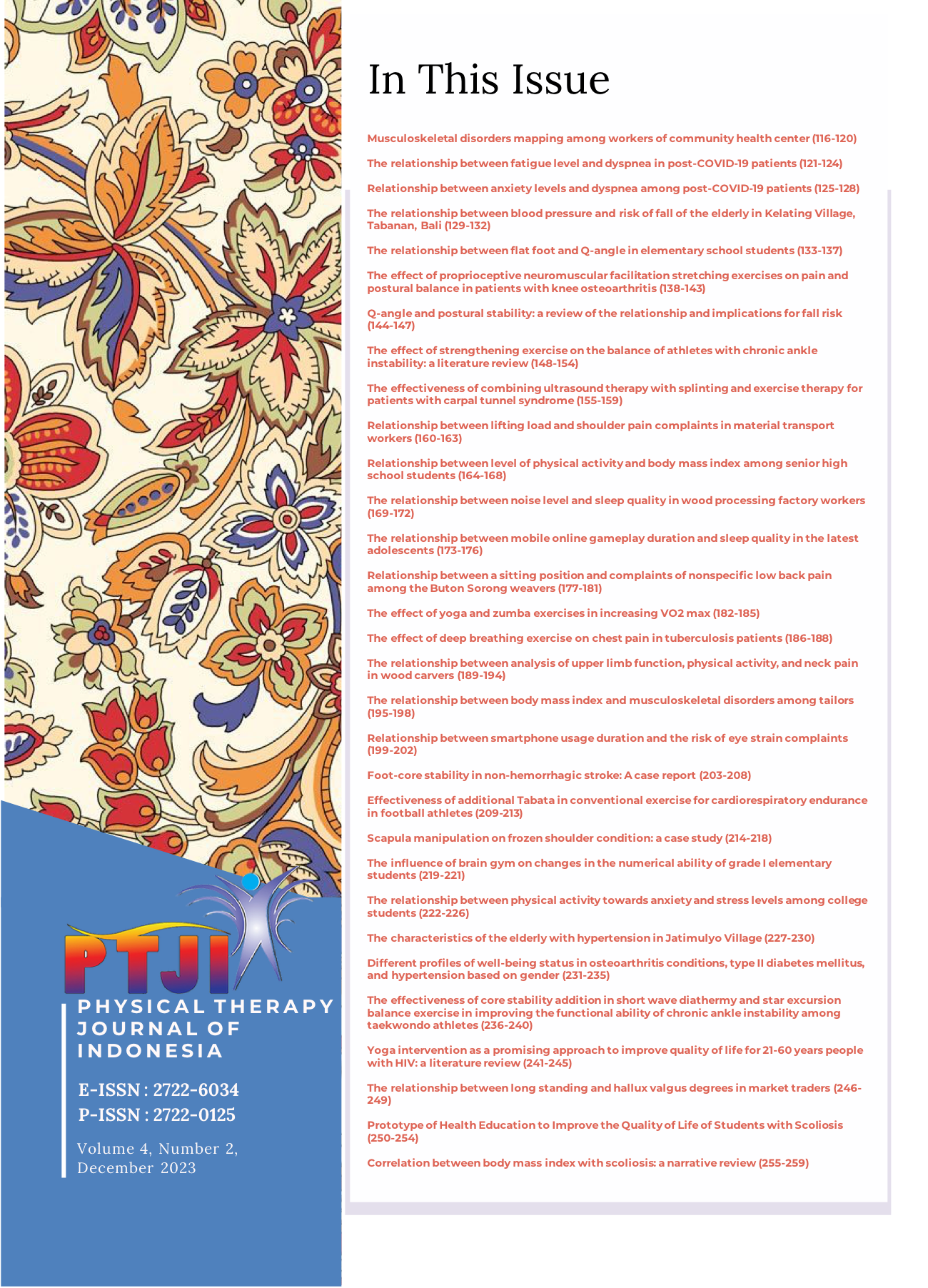The relationship between long standing and hallux valgus degrees in market traders
Abstract
Background: Hallux valgus is a deformity in the foot or a disorder characterized by a change in shape in the first metatarsophalangeal joint deviating towards the medial and the first big toe deviating laterally with rotation, symptoms caused such as swelling, redness, and pain. Long standing is one of the risk factors for hallux valgus. The recommended duration of standing is around 2.5 hours per day, and the increase in the recommendation may have a greater risk of getting Hallux valgus. The purpose of this study was to determine the relationship between long-standing and the degree of hallux valgus in market traders in Sanur, Bali.
Methods: This study used cross-sectional analytical observation with a sample of market traders in Sanur totaling 31 people. The measuring instruments used to determine hallux valgus are the goniometer and Manchester scale. Data analysis in this study used the Spearman rho test.
Results: Based on data analysis in the study, a positive correlation number of 0.506 was obtained with a significance value of p= 0.004, which means that there was a significant positive correlation between long-standing variables and the degree of hallux valgus in market traders in Sanur.
Conclusion: There was a significant positive relationship between the long standing and the degree of Hallux valgus market traders in Sanur, Bali.








3.gif)

